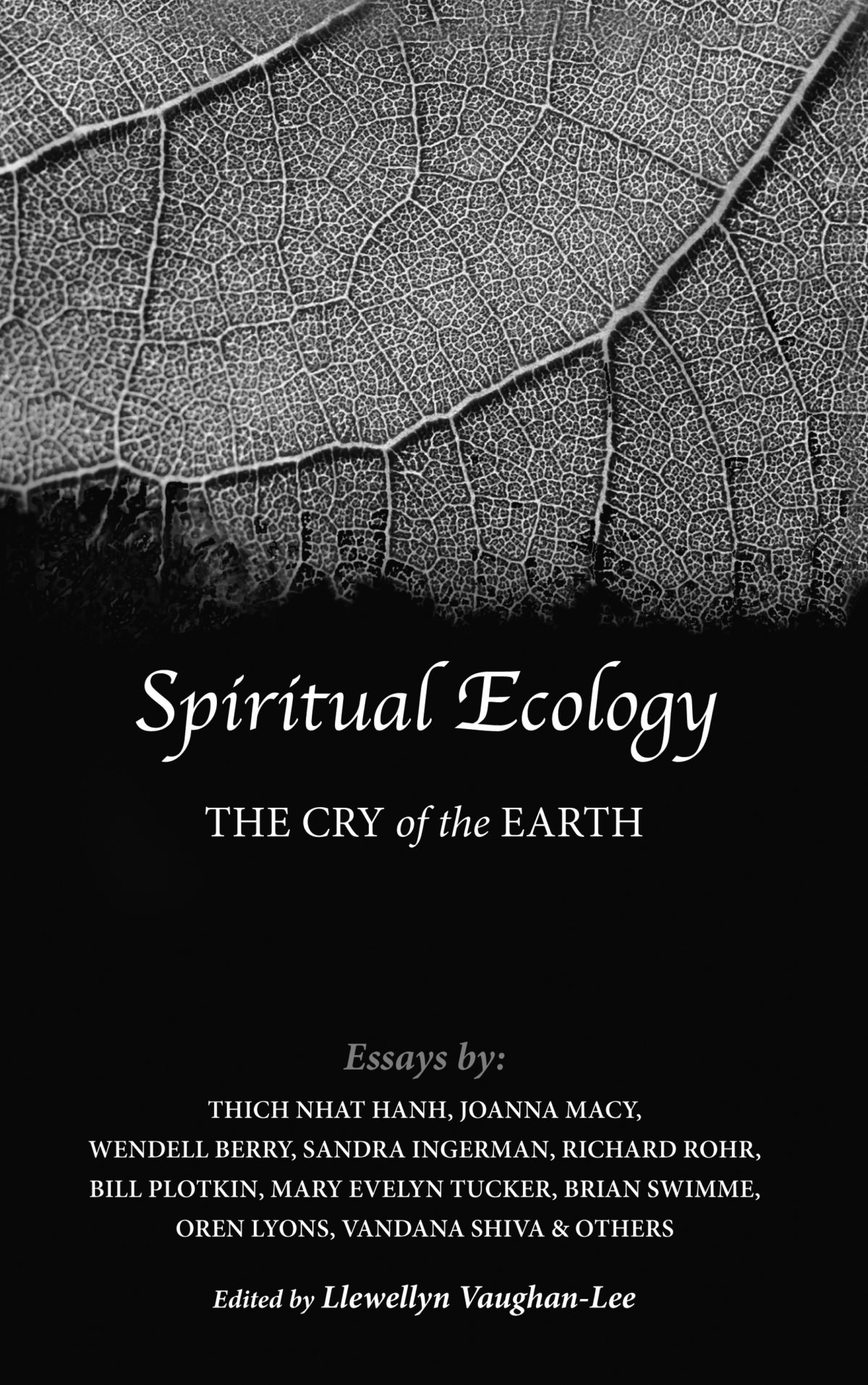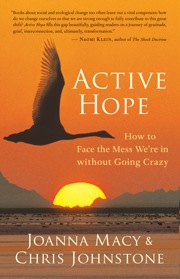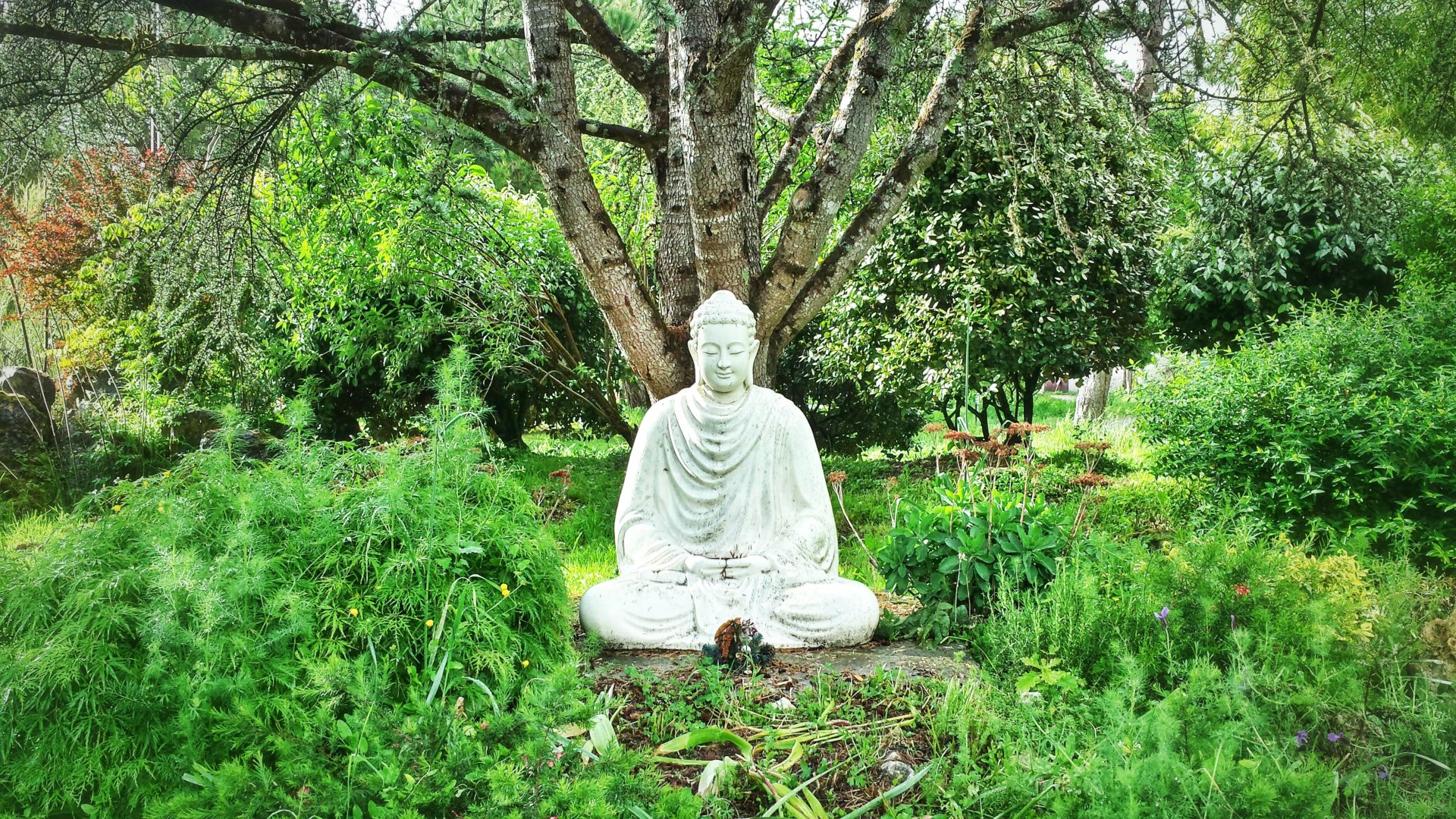
Spiritual Ecology
The Cry of the Earth
Edited by Llewellyn Vaughan-Lee
Golden Sufi Center, 2013
Softcover, 264 pages
Reviewed by Jayna Gieber, True Recollection of the Mindfulness Trainings
In Spiritual Ecology: The Cry of the Earth, Llewellyn Vaughan-Lee proposes that we are facing ecological and spiritual crises caused by our forgetfulness of creation’s sacred nature.

Spiritual Ecology
The Cry of the Earth
Edited by Llewellyn Vaughan-Lee
Golden Sufi Center, 2013
Softcover, 264 pages
Reviewed by Jayna Gieber, True Recollection of the Mindfulness Trainings
In Spiritual Ecology: The Cry of the Earth, Llewellyn Vaughan-Lee proposes that we are facing ecological and spiritual crises caused by our forgetfulness of creation’s sacred nature. “Do we feel a part of this beautiful and suffering planet, do we sense its need? The connection is a living stream that flows from our heart, embracing all life…. Every step, every touch… a prayer for the Earth, a remembrance of what is sacred.”
This anthology is a transmission of diverse perspectives—from indigenous visionaries, Buddhist scholars, and Christian mystics to scientific theorists. The reader is taken on a journey of oneness with all, including planet Earth. Teachings from around the world—Shamanic healing, Zen meditation, the Cosmic Christ, plus Persian and Hindu planetary cosmologies—inform us of ways to wake up and take right action now.
Many of the points regarding climate change are not new. However, I welcomed a fresh addressing of how to deal with the gravity of our times, not just through science but through eyes of compassion empowered by love, faith, and determination—so we can “dream a new dream…holding a good vision no matter what we see happening in the world.”
Spiritual Ecology looks to wisdom elders. Zen Master Thich Nhat Hanh offers, “What we most need to do is to hear within us the sound of the Earth crying.” Eco-spiritual activist, Joanna Macy, suggests opening to grief and despair over the climate crisis our planet and all species face. She cautions humans to avoid what appears to be apathy but is actually fear of suffering: “The bodhisattva knows if you’re afraid to get close to the pain of our world you’ll be banished from its joy as well.” Throughout the book we are counseled to behold the beauty of this world and the horror, while looking to a future that embraces the innocence and wonder of children. As a new grandmother, I was moved by wilderness guide Bill Plotkin’s poignant words, “Caring for the soul of children is one of the keystones of responding, in both a practical and spiritual way, to our current ecological crisis.”
This book stirs the heart, charges the spirit, and inspires motivation to protect all life and the Earth from a place of deep love. Guided by that love, we can weave a prayer basket, one that embraces both the scientific and spiritual dimensions of life, as the way to heal ourselves and the world.

Zooburbia
Meditations on the Wild Animals Among Us
By Tai Moses
Parallax Press, 2013
Softcover, 128 pages
Reviewed by Sandra Diaz
Part memoir, part urban field guide, Zooburbia is a sweet and humorous dive into Tai Moses’ worldview, in which animals take center stage. Moses describes Zooburbia as “the extraordinary, unruly, half-wild realm where humans and animal lives overlap.” It is apparent she feels at home in this world.
As a youth, Moses longed to leave her smog-covered city of Los Angeles in search of wilder landscapes. Only when she returned to a different city did she discover that an urban environment can and should hold space for wildlife. Looking deeply, Moses saw that her home was located in an important urban wildlife corridor. Inspired, she transformed her backyard from a food garden into a place where she could “help support my wild neighbors by cultivating the habitat they needed to survive.”
Her musings bubble up through a Zen Buddhist framework. Moses writes, “Observing these wild creatures has helped me to cultivate the habit of mindful attention.” Her conditions for happiness include “the hawk, the wild turkey, the monarch butterfly.” At the same time, she admits to being a daydreamer and goes on to chronicle one of her most dramatic calls to mindfulness—being butted by a bull. Her humorous account of that story ends with a renewed call to mindfulness: “The bull had shaken and awakened me into a heightened state of awareness and it felt…wonderful.”
Powerful life lessons are peppered throughout. Moses’ relationship with an octopus in a pet store becomes a lesson about love and understanding; her fear of spiders turns into a meditation on equanimity; the witnessing of animal suffering becomes a clarion call to compassion. The author weaves in stories of others who inspire her (and us in the process) with their capacity for caring. She tells of a friend who is able to view the owner of a chained dog with compassion, develops a relationship with the owner, and ultimately inspires the whole neighborhood to watch over the dog as their own. In another story she recounts how her schoolteacher took in a cat that jumped through a school window; it became a well-loved school pet.
Even Moses’ footnotes are engaging, whether they are offering educational resources on issues impacting animals or providing interesting facts. If you’re inspired by animals as esteemed teachers, you will greatly enjoy Zooburbia.

Active Hope
How to Face the Mess We’re in without Going Crazy
By Joanna Macy and Chris Johnstone
New World Library, 2012
Paperback, 288 pages
Reviewed by Laura Hunter, True Ocean of Teachings
If you have ever despaired about our current condition, grieved about the looming losses on our planet, or worried about future generations, then you’re in luck—Active Hope is just the medicine you need! This book provides a relevant, practical way forward for all of us who care about our planet. “Active hope” is not the “wishful thinking” hope that looks for someone else to save the day. Instead, it “involves identifying the outcomes we hope for and then playing an active role in bringing them about.”
Active Hope provides strategies we can use to take in the beauty of the world and then face its suffering without being overwhelmed. There are chapters on how to cultivate active hope, see reality with new eyes, build support for the work we do, maintain our energy, and protect our spirits. Importantly, it offers us a way to know how to continue to act in the face of uncertainty and non-knowing. For me, it was only after reading Active Hope that I was comfortable with not knowing the outcomes. In fact, even though I will never know, I can continue with joy and commitment. The book offers many concrete practices that can be done alone, with a partner, or with a group, to help us ground ourselves and act on the best of our aspirations for society and the world. The practices of asking, “What is happening through me?” and of creating a “Support Map” helped me realize how many people were there to encourage me, and to be encouraged by me, on this path.
Active Hope also explains the 1,200-year-old Shambhala Warrior Prophecy. This Tibetan Buddhist prophecy speaks of a time to come when all life on Earth is in danger. Shambhala Warriors emerge to change destructive ways using deep compassion and the insight of “radical interdependence.” The book also invites us to look deeply into the nature of hierarchical power and explore new ways to build power and influence that work with people and not over them.
Nelson Mandela said, “It always seems impossible, until it is done.” It may seem impossible to improve our situation, but by cultivating active hope, community, and a new vision, we might just turn the wheel enough to move the world in a more promising direction.

